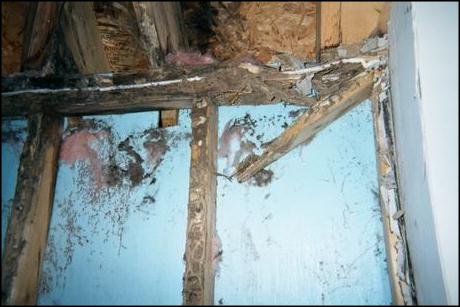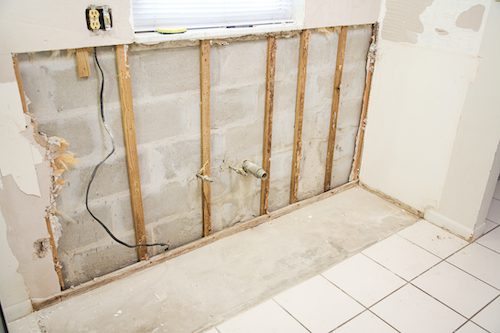Essential Steps To Diagnose And Mend Water Stains On Walls
Essential Steps To Diagnose And Mend Water Stains On Walls
Blog Article
The content which follows on the subject of How to Remove Water Stains from Walls and Ceilings is unquestionably stimulating. You should check this stuff out.

Water spots on wall surfaces are not pleasurable to the eyes. Your house must lack spots on the walls, roofing system, or floors. That is the optimal state of a house as well as its structures. Occasionally it appears practically inevitable to experience water discolorations on wall surfaces in houses.
Home owners living in damp areas continuously deal with the anxiety of water spots on wall surfaces. With precise and all-round information on the reasons of water spots and also timely repair procedures, you will constantly be a step ahead of such events.
3 Common Root Causes Of Water Stains on Walls
Unlike popular belief, water spots on wall surfaces do not always come from inadequate building materials. There are a number of sources of water stains on wall surfaces. These include:
Moist
When warm damp air meets dry cool air, it causes water beads to base on the walls of buildings. When there is vapor from food preparation or showers, this occurs in kitchen areas as well as washrooms. The water beads can stain the surrounding walls in these parts of your house as well as infect various other areas.
Damp or condensation impacts the roofing as well as wall surfaces of structures. This creates them to show up darker than other areas of the house. When the wall surface is wet, it develops an ideal environment for the growth of fungi as well as microorganisms. These might have damaging results on health, such as allergies and respiratory conditions.
Poor Drain
When making a structure plan, it is crucial to guarantee sufficient drain. This will certainly protect against water from permeating right into the walls. Where the drainage system is clogged or missing, below ground dampness builds up. This links to excessive wetness that you see on the wall surfaces of your structure.
So, the leading reason for wet walls, in this instance, can be an inadequate drain system. It can also be due to poor management of sewer pipelines that go through the structure.
Pipeline Leaks
A lot of homes have a network of water pipelines within the walls. It always increases the stability of such pipelines, as there is little oxygen within the wall surfaces.
A disadvantage to this is that water leak affects the wall surfaces of the building and triggers widespread damages. An indicator of defective pipelines is the appearance of a water stain on the wall surface.
Pro Suggestion
A houseplant in your house likewise increases its moisture. So, if the house is currently humid, you might wish to present houseplants with very little transpiration. An instance of appropriate houseplants is succulents.
Water Stains on Wall Surface: Repair Work Tips
When dealing with water discolorations, property owners would usually want a fast fix. Yet, they would certainly soon recognize this is disadvantageous as the water spots reoccur. Below are a few handy suggestions that will certainly direct you in the fixing of water stains on wall surfaces:
Final thought
Although nobody intends to have water discolorations on walls in their home, it can happen to the very best of us. This article gives you take advantage of, as you currently understand just how to manage this problem if it does take place.
It is constantly best to recruit professional services to help repair the damages in your home.
In some cases it seems practically inescapable to experience water spots on wall surfaces in houses.
Contrary to popular belief, water spots on wall surfaces do not constantly stem from poor building materials. There are a number of causes of water spots on wall surfaces. The water beads can tarnish the bordering walls in these parts of your house and spread to other areas.
Here are a couple of handy pointers that will certainly lead you in the repair service of water spots on walls:
How to identify and deal with water spots on walls and ceilings
Where is water coming from?
Where is the water coming from? Is the roof above it? Or how about a bathroom? Potentially a leaky pipe? Whatever is up, it’s wet. Repairs cannot be attempted until the source is identified and the necessary repairs made. Otherwise, repairs are moot. The water stain will just come back.
Many times the repair is simple. A common source is water seepage. A shower pan or piping that once had be caulked could have sprung loose causing a slowly leaking pipe. Address potential piping issues before proceeding.
If it’s the roof that’s up, check it for leaks. Roof water is not always attributed to a roof problem. Depending where in the country you are located, you could be looking at an ice dam, which means new insulation and repairs. Roofs can leak, shingles can slip. Again, the repairs must be made before any patch work can happen inside.
Why is there a water spot?
Water stain repairs always come last. Repairing a water stain inside your home before addressing the issue is going to lead to disappointment. Repairs will quickly be taken apart by a continuous leak. You will need to see how wet the area actually is. Potentially, you could be looking at taking out a piece of the ceiling or drywall to get down to a dry bones before moving forward. If you neglect this step, you are sure to have bleed through on the repair.
How to go about fixing the problem?
Clean.
Once the underlying cause of the stain is dealt with, you can begin by cleaning the stain with bleach. Mix one cup of bleach with three cups of warm water and wipe the wall down. This mixture will also remove any leftover mildew, dirt or dust that could prevent a good paint job. Rinse the solution off with a spray bottle and towel.
Prep.
Get a drop cloth set up on the floor below your project. If the mess is on a ceiling, protective gloves and goggles will be crucial. After the area is dry, tape off any areas, like trim, you want to keep paint-free.
Prime.
Use a good quality base coat of stain-blocking primer. Your ceiling is probably painted with an interior latex paint, meaning it is water soluble. Water will destroy this kind of paint and cause lingering issues with your job. The base coat will block this from happening again in the future.
Paint.
After ample drying time, apply at least two coats of ceiling paint, with drying time in between. Oil-based ceiling paints will contain more volatile organic compounds (VOCs) and fumes, so take precautions not to expose yourself to this paint for too long.
Your ceiling should look pristine a new. Provided the problem has been completely solved, there will be no returning halo in your paint job.

As a passionate reader about Water Stains on Walls, I was thinking sharing that piece of content was a good idea. Do you know about another person who is interested in the topic? Be sure share it. We take joy in reading our article about Water Stains on Walls.
Visit The Following Page
Report this page